Website Personalization Examples & Ideas: How Are Leading Brands Doing It?
Learning From The Leaders: How To Personalize Website Experiences
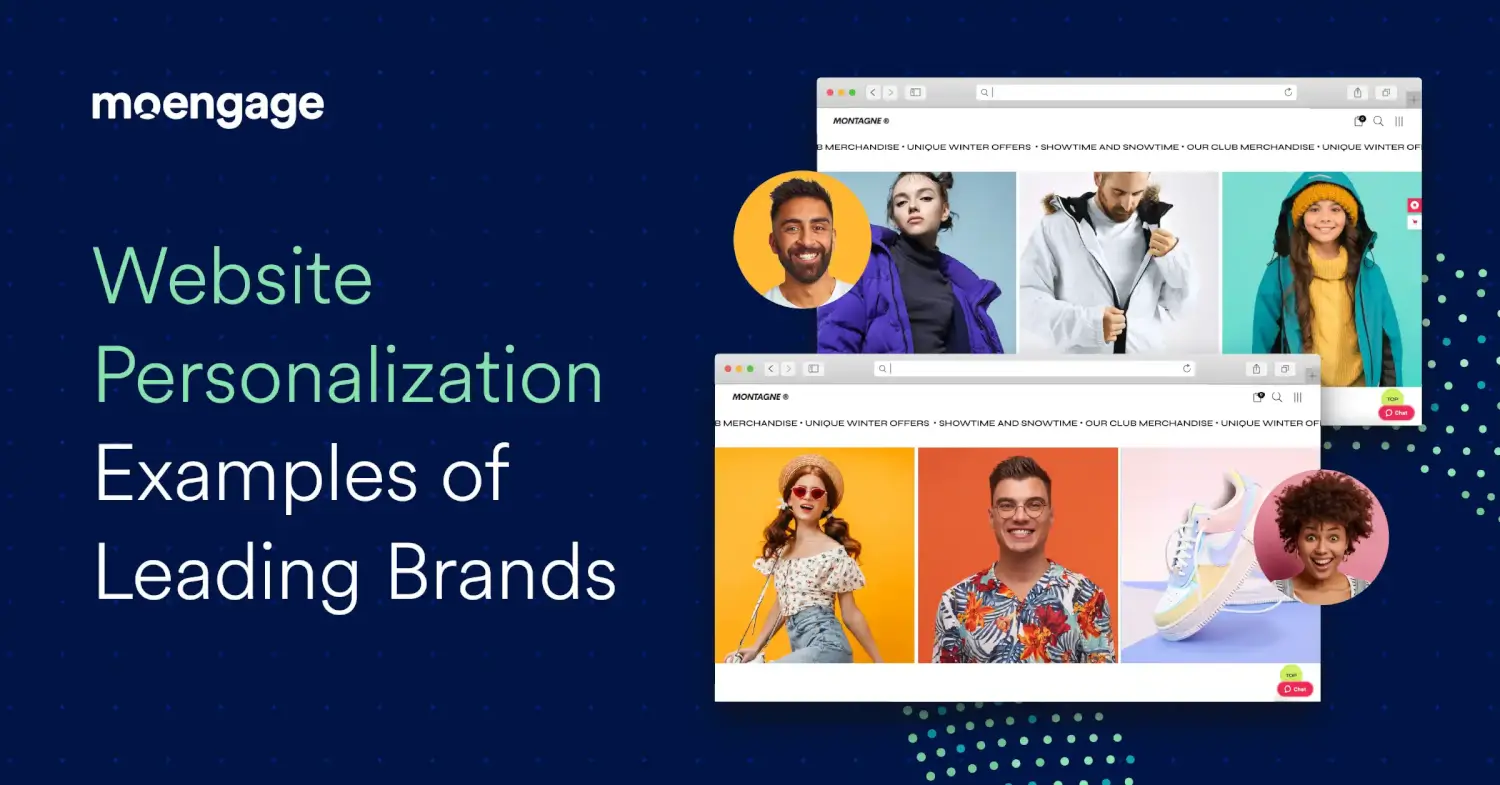
Reading Time: 7 minutes
In today’s cut-throat competition to grab eyeballs and retain customers, marketers know that the spray-and-pray approach to marketing doesn’t cut it. Customers expect brands to provide personalized customer experiences tailored to their interests, preferences, and location. The Personalization Pulse Check Report reveals that 26% of Americans and Europeans want B2C brands to personalize their experience based on their purchase history.
Read more about Mastering the art of B2C Personalization.
To stay on top of the competition and customer expectations, brands must deliver relevant, contextual, and personalized experiences prioritizing customers’ brand experiences. One of the most effective ways to achieve this is through website personalization.
Website personalization boosts conversions and retention by creating delightful web experiences. You can accomplish this easily by using AI-powered customer engagement platforms that use customer data, past behavior, browsing and purchase history, location, and more to create tailor-made web experiences. Website personalization boosts conversions and reduces your customer acquisition cost by 50%!
| Learn how MoEngage can help you create memorable website experiences. |
In this post, let’s explore real-world examples of website personalization across different industries and examples you can learn from and implement for your brand.
How Leading Brands Are Leveraging Website Personalization
E-commerce and Shopping
1. Amazon
Amazon has mastered the art of website personalization with product recommendations to drive sales. They analyze customer behavior and recommend products based on the customer’s previous purchase and browsing history. For example, if a customer has searched for or purchased a specific genre of books, Amazon’s website recommends similar books to them.
This approach of personalized product recommendations has been highly effective, with Amazon bringing in 35% of its revenue from product recommendations.
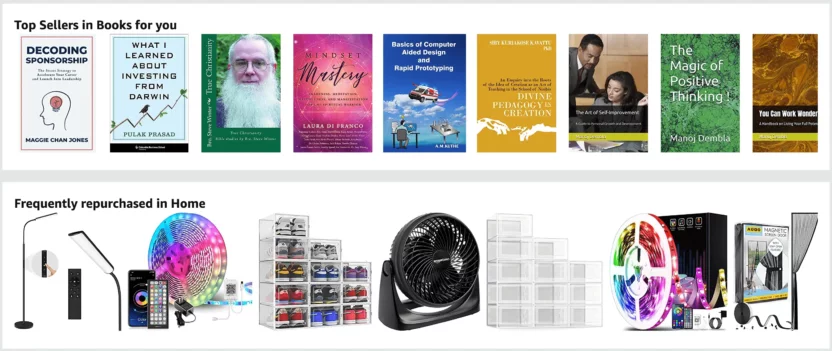
Amazon also uses website personalization by showing a personalized homepage with relevant discounts and deals, nudging more conversions.
The shopping giant also effectively drives product discoverability with their “Customers who bought this also bought” feature. With this, Amazon displays products frequently purchased together based on similar purchase data made by other customers. This also encourages customers to make additional purchases.
But the brand doesn’t stop personalizing its website or even the app. Amazon smartly integrates website personalization with its omnichannel marketing strategy in its marketing emails with similar product recommendations and discounts that it displays to a specific customer on its website and app. This helps them boost customer engagement, create a delightful experience, and encourage them to keep shopping.
2. Sephora
Popular beauty E-commerce brand, Sephora, is another brand that uses website personalization to create a more engaging customer experience.
Sephora customers see a great range of personalized recommended products and content based on their preferences, skin and hair type, tutorials, past purchases, and browsing history. For example, when a customer has been checking out a cruelty-free brand’s foundation for combination skin, they are recommended products from brands of similar segments and also given suggestions of pairing the foundation with other products such as a concealer or another similar foundation.
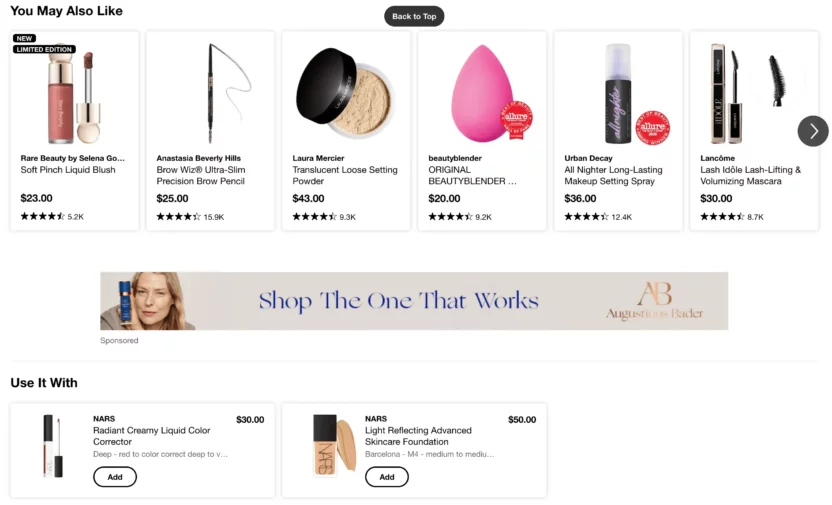
They also have a “Beauty Insider” program that rewards customers for their purchases and helps them earn points they can redeem for free products based on their purchase history, boosting engagement and purchases. This also helps drive product discoverability for the free products. Sephora makes personalized product recommendations tailored to each customer’s beauty profile by analyzing customers’ purchase history and preferences.
Like Amazon, Sephora also uses omnichannel marketing by sending emails with similar product recommendations, discounts, and content tailored to the customer’s interests, beauty profile, and interests to boost purchases. This also helps drive a higher click-through rate.
| Learn more about how other E-commerce brands use personalization to boost engagement and conversions. |
OTT Subscription and Entertainment
Personalized content recommendations are a great way to create a personalized and engaging website experience, especially for OTT brands. These brands offer personalized content recommendations that boost engagement, encourage visitors and customers to return to the website and analyze their viewing or listening habits.
3. Netflix
Netflix is a popular subscription-based movie and sitcom streaming brand that has nailed website personalization. With personalized recommendations of movies and TV shows across categories, Netflix knows its audience’s interests in genres, language preferences, and the content the customer would love to consume next.
To achieve this, they analyze viewing history to make personalized recommendations. This has proven a successful strategy for Netflix, with more than 80% of TV show consumers discovering content through personalized content recommendations.
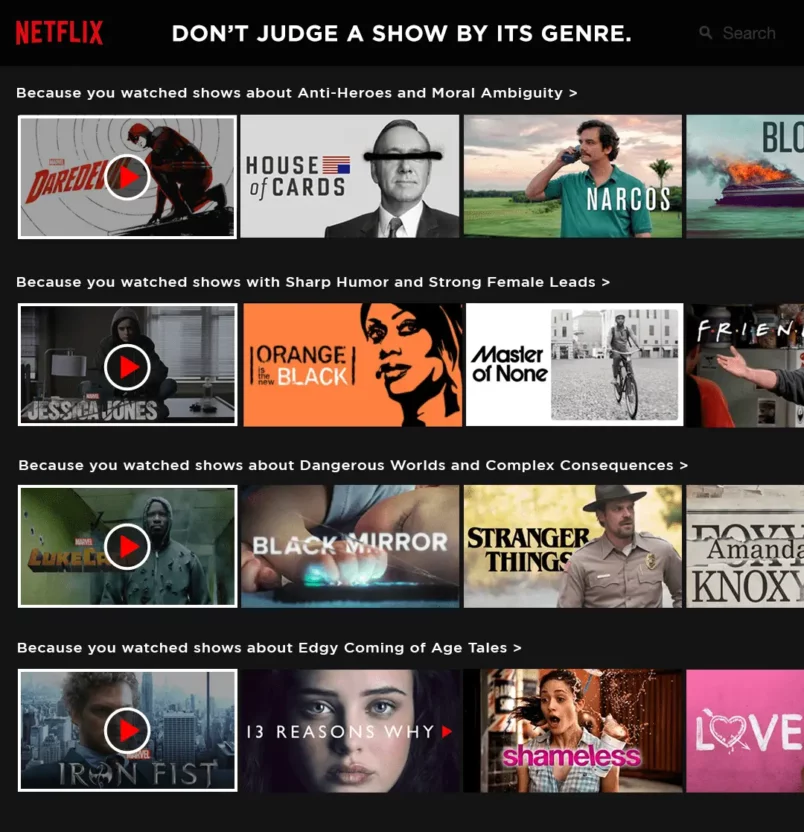
4. Spotify
Spotify, a popular music streaming service has nailed website personalization with personalized music recommendations. The website recommends music, artists, and albums based on the customer’s listening history and the duration and frequency of listening to a specific genre, artist, music preferences, and even language.
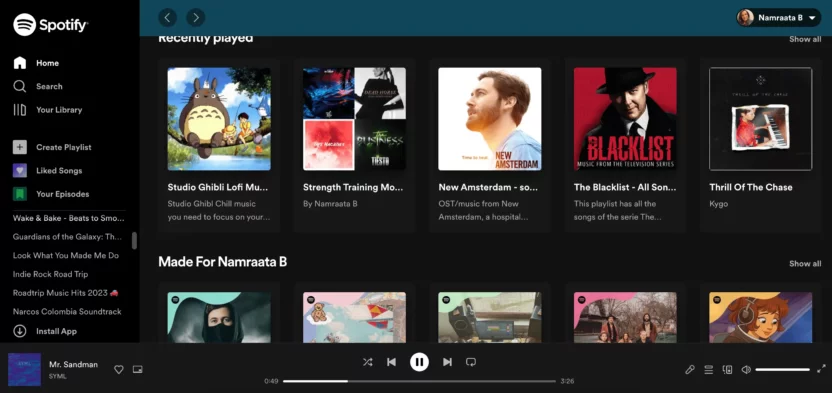
Such personalized music recommendations have had a far-reaching impact on Spotify, becoming a favorite music streaming platform globally with over 345 million active customers.
Moreover, their highly engaging and successful campaign, “Spotify Wrapped,” gives their listeners an in-depth insight into their year in music, showing the most-listened-to artists, songs, and podcasts based on listening data. Adding audio auras based on the listeners’ top two music moods of the year got their customers and listeners sharing their unique “Spotify Wrapped” all over social media, garnering much engagement.
| See how MoEngage can help you drive engagement and conversions with Website Personalization. |
Banking and FinTech
5. Capital One
Capital One offers financial services and products like credit cards, loans, and other banking services. The company has heavily invested in personalization to understand its customers’ needs and behaviors and offer a deeply personalized experience. A great way they’ve implemented website personalization is by providing recommendations and offers based on their browsing, transaction history, segment, affinity, and financial goals, among others.
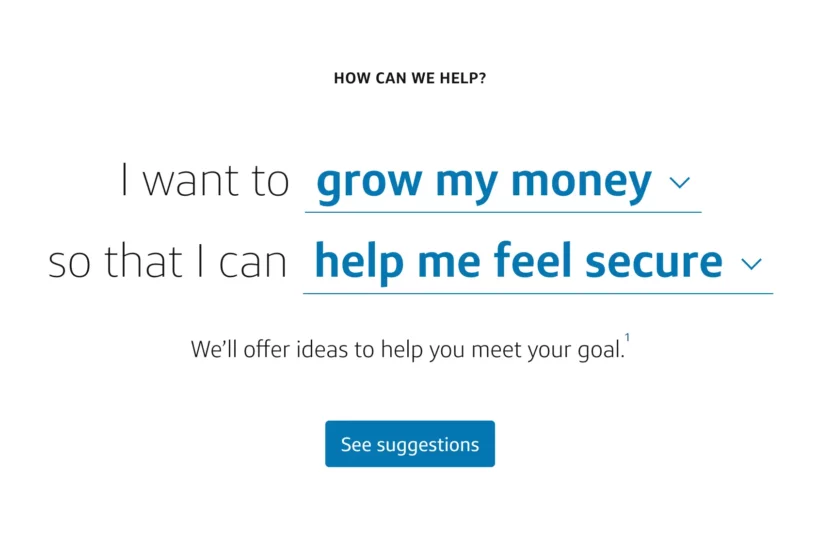
For instance, if you’ve been checking out their credit cards page but haven’t applied, their website displays personalized messaging that encourages you to apply for one based on your customer journey stage and segment. You may also find relevant content with personalized financial advice based on your interests, needs, and risk appetite.
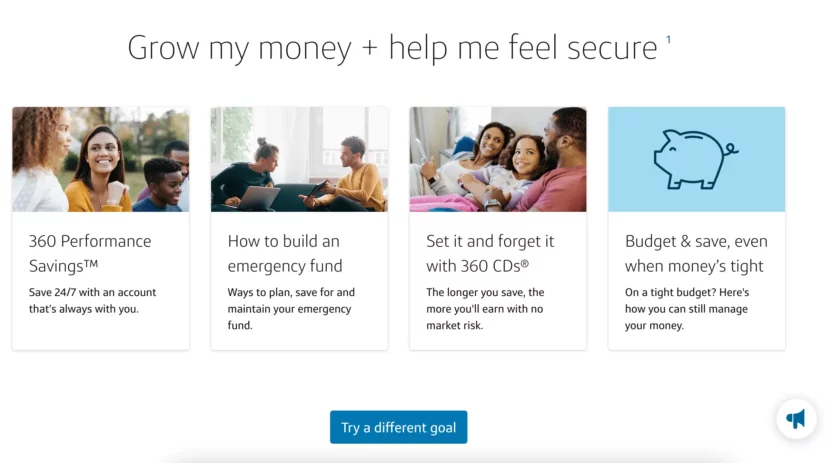
Travel and Hospitality
6. Airbnb
Airbnb has become a popular platform for global vacation rentals and experiences. Airbnb improves its brand experience and drives conversions with personalization. They’ve done this by using each visitor’s location and search history and showing them relevant and personalized properties that suit their needs.
For instance, if a visitor has previously booked in a specific country, looked for properties close to a city for a weekend getaway, or searched for pet-friendly properties, Airbnb recommends relevant vacation rentals. This helps their visitors discover properties that they otherwise wouldn’t have found and nudges them to continue exploring the website.
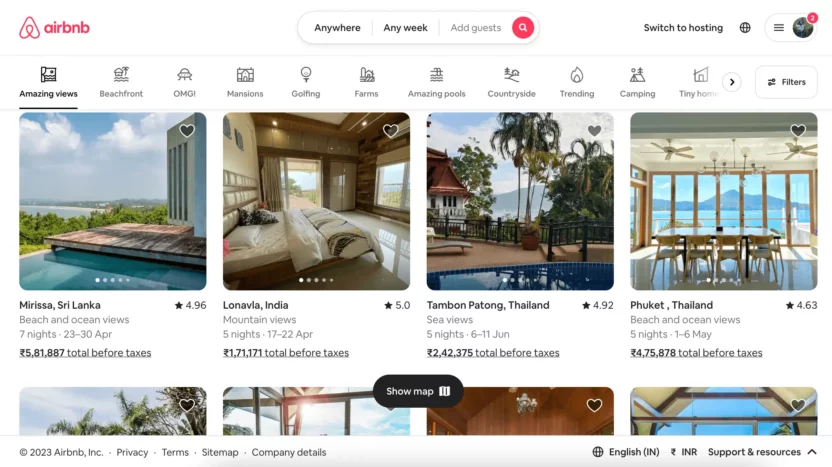
Another way they deploy personalization is by using dynamic pricing that adjusts the cost of the properties based on the supply-demand for a specific location, season, and search history.
To make the brand experience even more memorable, they send personalized messages and notifications post a booking with information about their upcoming trip, including possible recommendations of experiences, local restaurants, popular attractions to experience, and how to make the most of their journey. This helps their customers feel connected to their travel experiences and engaged with the platform.
7. Booking.com
Booking.com is an online travel marketplace for booking accommodations around the world. Their strategy to leverage website personalization can be seen with their personalized landing pages to deliver an engaging customer experience. When a visitor lands on their website, the brand personalizes the landing page based on the visitor’s search history and preferences, which in turn helps them recommend relevant hotels and experiences for their upcoming trip.
Not just that, let’s say that based on your location, search history, or booking history (let us assume you were previously looking for hotels in Milan, Italy), the platform recommends hotels to you based on your primary preference. But when you change your search (from Milan to New Delhi, India, and looking for pet-friendly options), the platform recommends hotels in New Delhi in real-time (since you changed your affinity from Milan to New Delhi). The page banners are swapped in real-time based on your latest preference and affinity. Booking.com also shows personalized deals and discounts based on your affinity, preferences, and history.
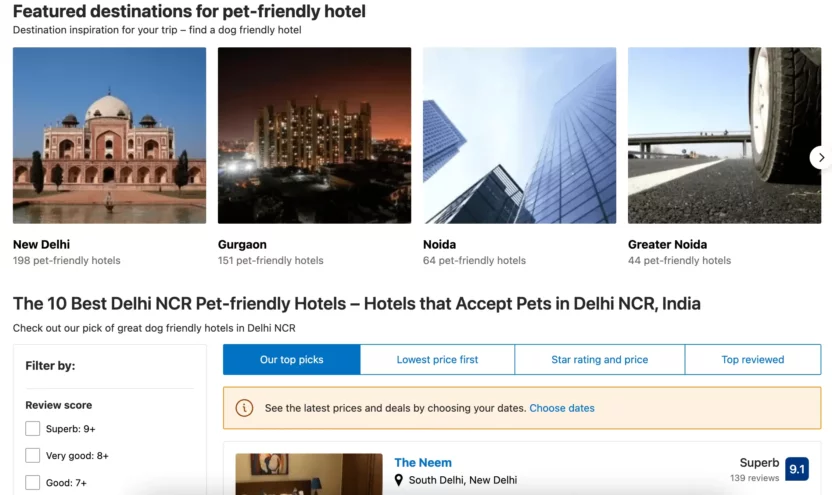
Conclusion
Website personalization has become an essential and powerful tool for brands across industries that want to create a delightful customer experience to drive engagement, conversion, and retention. Personalizing your website to visitors’ and customers’ preferences, affinity, behavior, past data, and location can also help you drive customer loyalty.
The real-world examples we’ve explored in this post showcase the power of website personalization in action, and we hope they help in your website personalization efforts too.
So, experiment with different website personalization techniques and see what works best for your business. MoEngage’s Personalize helps you create a delightful web experience that your customers will love. Try it out by speaking to our experts.













